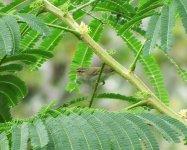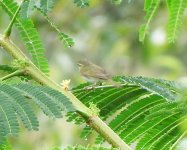BKKBen
Well-known member
Hi all,
Any chance of an ID on this warbler seen in Loei province, Thailand on Oct 9, 2017. These are the only two pics I managed and I didn't hear a call etc. Seen at a hillside temple.
Is it an Arctic?
Thanks in advance,
Ben.
Any chance of an ID on this warbler seen in Loei province, Thailand on Oct 9, 2017. These are the only two pics I managed and I didn't hear a call etc. Seen at a hillside temple.
Is it an Arctic?
Thanks in advance,
Ben.






